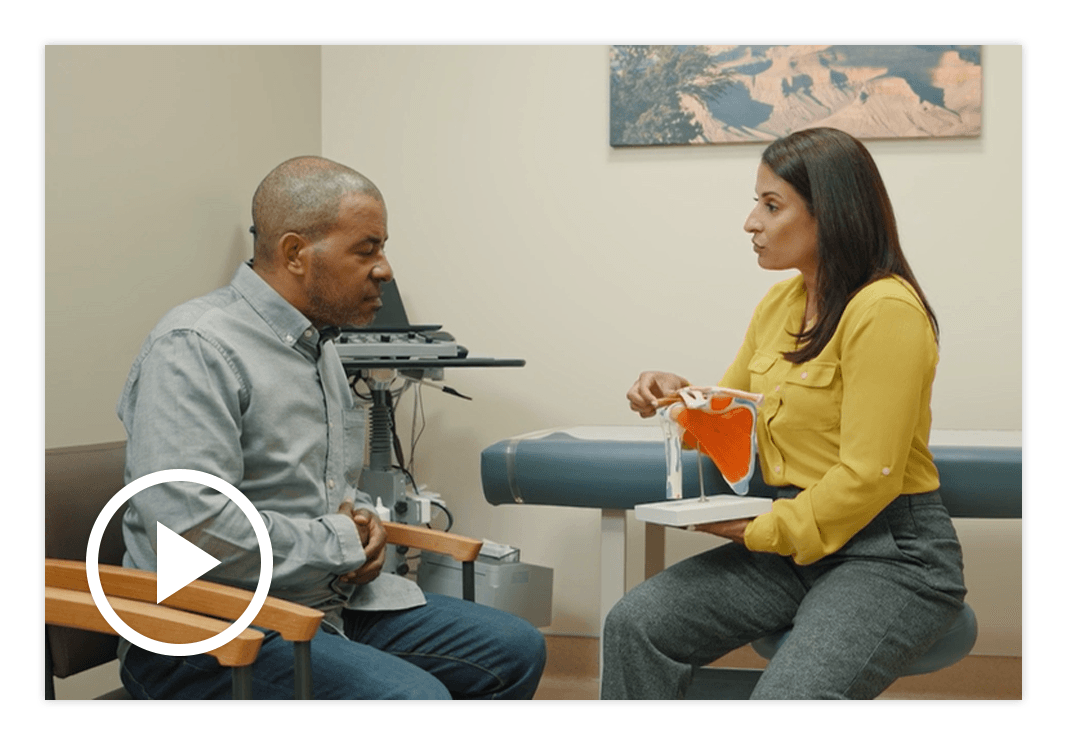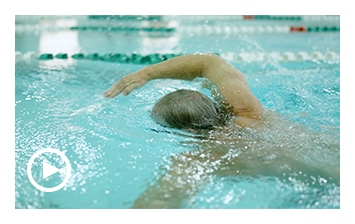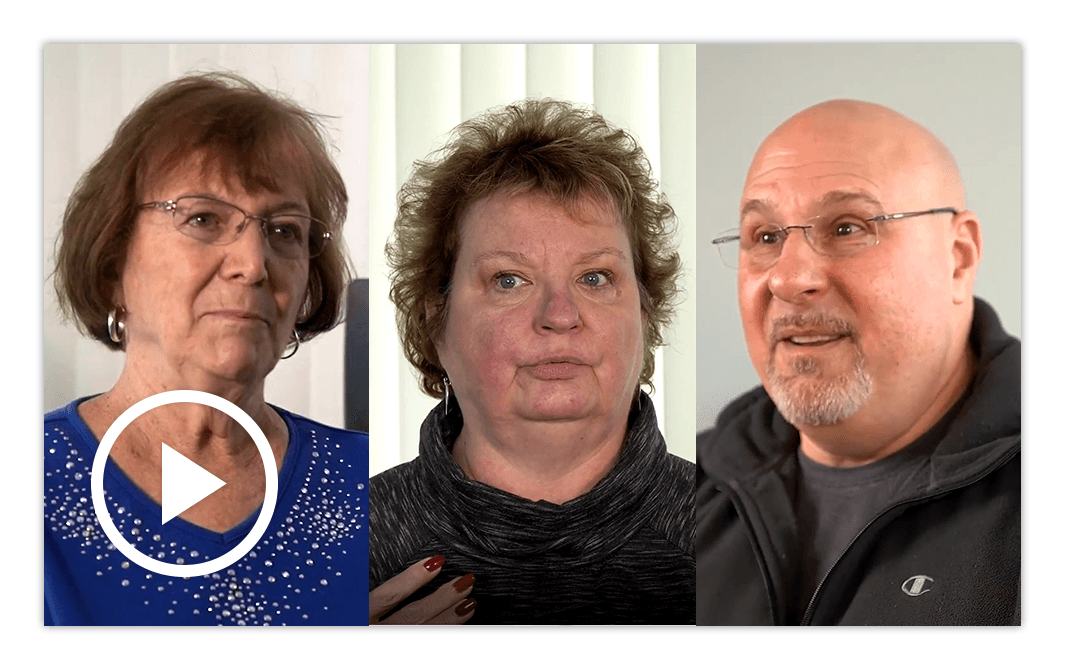Patient stories
Everyone is different. Your shoulder is unique, and your pain is unique. But one thing we all have in common is the desire to be pain-free and to keep moving. Watch the patient education video featuring Dr. Kasim to hear what you can expect during shoulder replacement surgery as well as the below patient stories to hear about their journeys and how shoulder replacement put them back in control and on the move. Take the first step towards creating your own success story, find a doctor today in your area.
Dr. Greg Taylor
Shoulder iD Primary Reversed Glenoid
"Both shoulders were feeling great for overhead stroke."
Dr. Greg Taylor, a retired orthopaedic surgeon, has always led an active lifestyle, from swimming to scuba diving and lifting weights. He knew it was time for shoulder replacement when he started experiencing pain in his right shoulder and had to become left-handed at everything. Three months following the surgery, Dr. Taylor was able to resume swimming with no pain, and five months post-op, he could get out of the water using the dive ladder with no hesitation or discomfort.
Learn more about Shoulder iD
Jeff Brantley
Blueprint 3D Planning
"The first time being able to go out and throw with my son, it was great for me but it was greater for him."
Jeff, a former baseball pitcher had a history of shoulder pain that culminated after his career when he couldn’t perform everyday tasks, “I can’t even get a pitcher of milk out of the refrigerator, I’m a pro athlete, I should be able to do that in my sleep!”… “I don’t mind the pain, I just want to have a catch with my son.
Jeff had a shoulder replacement and after four months, his original pain was gone and he was able to resume daily activities.
Learn more about Blueprint
Jean, Barbara and Nick
Shoulder replacement recipients
"I am so glad I can raise my arm and have my life back." –Barbara
Jean, Barbara and Nick all experienced shoulder issues that required a full shoulder replacement. Their surgeon provided several different options for their type of shoulder replacement. Following the surgery and physical therapy, they built up the strength, movement and motion in their arm and were amazed at what they can do again.
Learn more about implant solutions
John Bowling
Tornier Simpliciti Recipient
"Life's good again."
When John could no longer perform simple tasks such as dressing himself, his wife made him an appointment with a shoulder specialist. John was suffering from severe arthritis in both shoulders and went on to have shoulder replacement in both shoulders with Tornier Simpliciti. John is back to working outdoors and his only regret is that he waited so long to do something about the pain.
Learn more about Tornier Simpliciti
Find out why your shoulder hurts.

Shoulder replacement
Anatomic total shoulder joint replacement is intended for use in individuals with painful, disabling joint disease of the shoulder resulting from: degenerative arthritis, rheumatoid arthritis or post-traumatic arthritis. Additional indications could include but not limited to: aseptic necrosis of the humeral head, proximal humeral fracture and revision of previous unsuccessful hemiarthroplasty or other procedures.
Reverse total shoulder joint replacement is intended for use in individuals with a functional deltoid muscle and with massive and non-repairable rotator cuff tear with pain disabled by: rheumatoid arthritis, non-inflammatory degenerative joint disease, humeral head fracture, traumatic arthritis and revision of devices if adequate bone stock remains.
Shoulder joint replacement surgery is not appropriate for patients with any active or suspected latent infection in or about the shoulder joint, any mental or neuromuscular disorder which would create an unacceptable risk of prosthesis in stability, prosthesis fixation failure or complications in postoperative care. Additionally, shoulder joint replacement surgery is not appropriate for patients whose anticipated activities would impose high stresses on the prosthesis and its fixation.
As with any surgery, shoulder joint replacement surgery has serious risks which include, but are not limited to, pain, infection, intraoperative complications, component wear, nerve damage, loosening of shoulder components and dislocation of the shoulder prosthesis.
Implant related risks which may lead to a revision or removal of the implant include being overweight, manual labor activities, some sports activities, patient age, activity level, medical conditions, alcohol or drug addiction, and mental disorders. Shoulder joint implants may not provide the same feel or performance characteristics experienced with a normal healthy joint
The information presented is for educational purposes only. Speak to your doctor to decide if joint replacement surgery is appropriate for you. Individual results vary and not all patients will return to the same activity level. The lifetime of any joint replacement is limited and depends on several factors like patient weight and activity level. Your doctor will counsel you about strategies to potentially prolong the lifetime of the device, including avoiding high-impact activities, as well as maintaining a healthy weight. It is important to closely follow your doctor’s instructions regarding post-surgery activity, treatment, and follow-up care. Ask your doctor if a joint replacement is right for you.
This site is for visitors from the United States.
Stryker Corporation or its divisions or other corporate affiliated entities own, use or have applied for the following trademarks or service marks: Blueprint, ReUnion, Simpliciti, Shoulder iD, Stryker, Tornier. All other trademarks are trademarks of their respective owners or holders.
Copyright © 2024 Stryker
OT-AWI-53 Oct-2023




